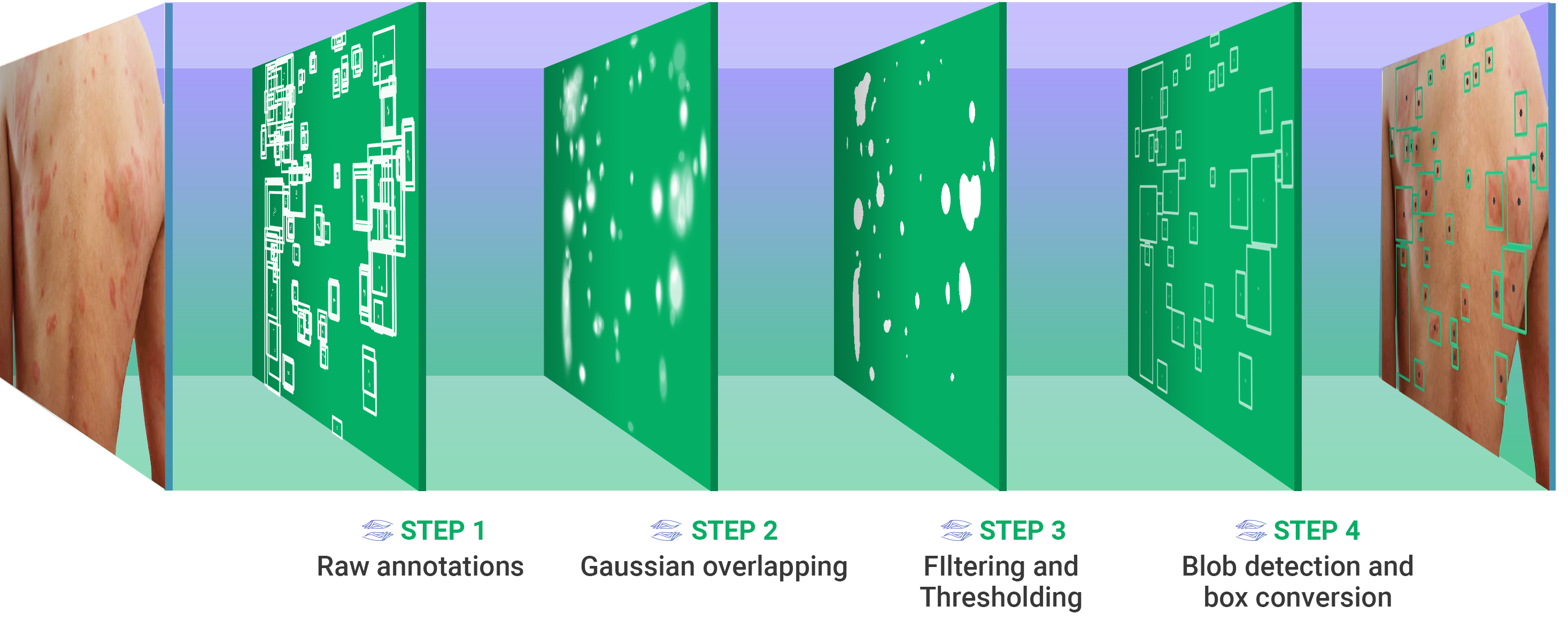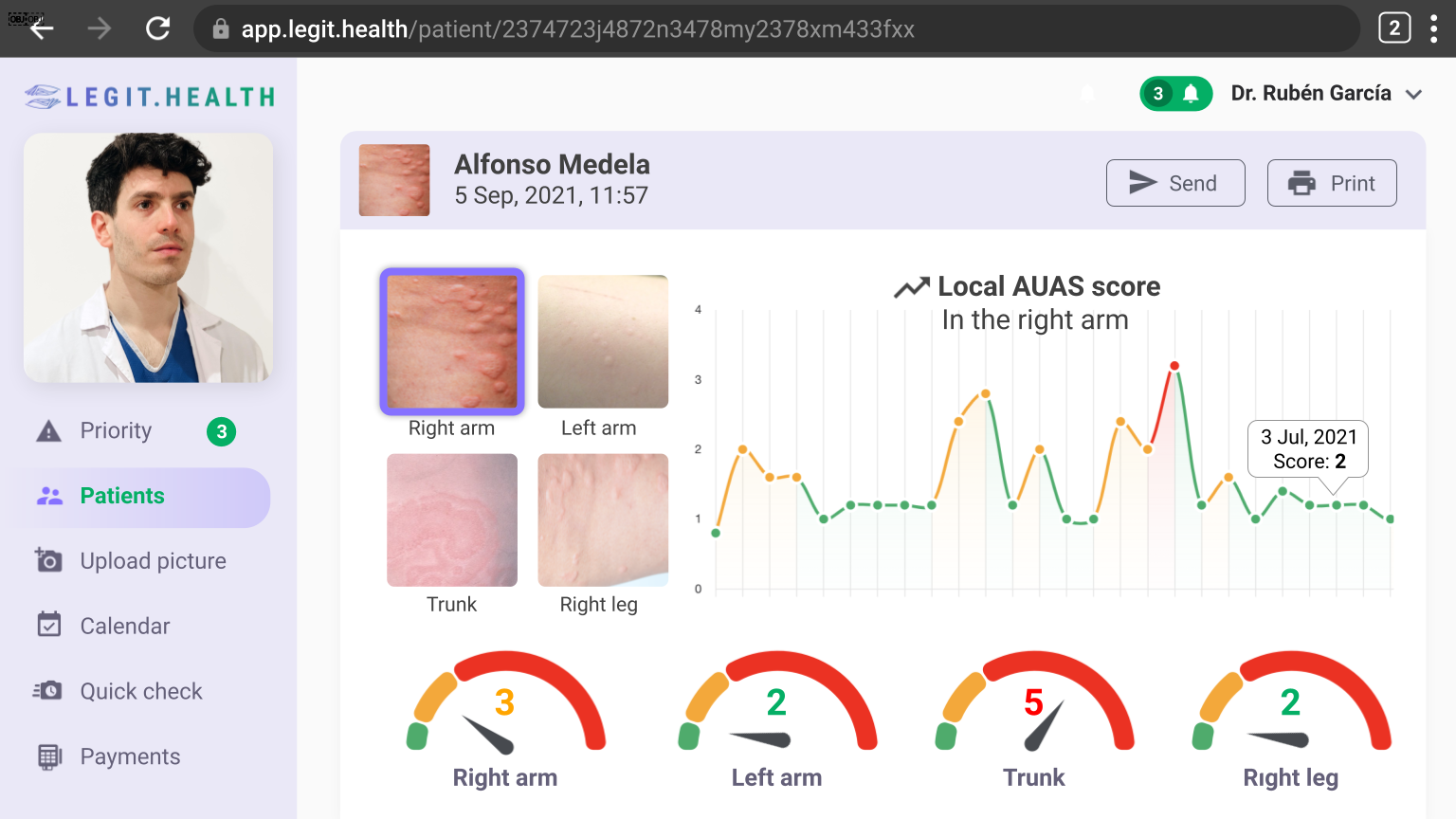What is the UAS?
What is the Urticaria Activity Score (UAS)?
Urticaria symptoms can fluctuate considerably during the same day. Unfortunatelly, doctors don't have reliable diagnostic and activity markers for urticaria. Therefore, urticaria activity can currently be measured only by the use of questionnaires, known as patient-reported outcome measures.
The Urticaria Activity Score, also called UAS is a questionnaire to measure how much urticaria a patient is suffering.
The UAS is an established and widely accepted tool to prospectively measure chronic spontaneous urticaria activity. It's the most used instrument to measure urticaria, both in clinical trials and in day-to-day practice. It has been used in most clinical trials in chronic spontaneous urticaria in recent years as the main outcome parameter.
Why is UAS score important?
Chronic urticaria affects around 1% of the general population worldwide. Urticaria, also called 'hives', affects people's quality of life. It affects day-to-day activities and work productivity, and has negative effects on people's sleep, and emotional and psychological well-being. The burden of urticaria on patients, their family and friends, the health care system and society is substantial.
When a doctor prescribes a treatment for a patient with urticaria, the severity of the disease is the most relevant data point to decide which is the correct treatment.
That is why doctors invented the UAS: it allows the measurement of the severity of urticaria to prescribe the best treatment and to measure how it's working. Without a tool like the UAS, it would be very difficult to help patients and develop new treatments for patients suffering from urticaria.
Who created the UAS?
The UAS was created in 2006 by a group of doctors led by a German doctor called Torsten Zuberbier. The UAS was first published in a guideline for the diagnosis of urticaria, called EAACI/GA2LEN/EDF guideline: definition, classification and diagnosis of urticaria.
The publication reads:
Here, we propose a unified scoring system that would facilitate the comparison of study results from different centres. This simple scoring system (Table 3) is based on the assessment of key urticaria symptoms (wheals and pruritus).
Table 3. Assessment of disease activity in urticaria patients
| Score | Wheals | Pruritus |
|---|---|---|
| 0 | None | None |
| 1 | Mild (<20 wheals/24 h) | Mild |
| 2 | Moderate (21–50 wheals/24 h) | Moderate |
| 3 | Intense (>50 wheals/24 h or large confluent areas of wheals) | Intense |
Sum of score: 0-6
However, the name 'UAS' was assigned later to this scoring system, in the following version of the same guideline, titled EAACI/GA(2)LEN/EDF/WAO guideline: definition, classification and diagnosis of urticaria.
A unified and simple scoring system, the urticaria activity score (UAS), was proposed in the last version of the guidelines.
There are prior mentions of urticaria activity scores in publications as old as 1992, such as Plasmapheresis for severe, unremitting, chronic urticaria and 1998 Intravenous immunoglobulin in autoimmune chronic urticaria. However, they are not referring to the same scoring system; it's a coincidence.
Does the UAS work?
Although the UAS is still the most used tool to measure urticaria, it has been well established that it's far from perfect. Many researchers have demonstrated its profound limitations.
A study published in 2022, called Automatic Urticaria Activity Score (AUAS): A Novel Technology for Urticaria Severity Assessment Based on Automatic High-Precision Hive Counting, explained that:
The most indisputable limitation of manual scoring systems is the inherent difficulty of human beings to quantify parameters in an objective, stable and precise way. Humans have a limited ability to count hives (...).
However, the most famous and widely criticized limitation of the UAS score is that it is minimum detectable change.
(...) scoring systems classify disease severity using a limited range of scores, with three or four categories, such as none, mild, moderate and severe. These questionnaires have a very high minimum detectable change, as they are discrete ranges rather than continuous scales.
Is there a better alternative to UAS?
In 2019, a multidisciplinary team of scientists from several countries developed the Automatic Urticaria Activity Score, also called AUAS. The AUAS automatically measures how much urticaria a patient suffers from by analyzing a photo of the patient.
The main advantage of the AUAS is speed. The AUAS requires only raking a picture and checking a checkbox, while the manual UAS requires several minutes every day. The reality is that many patients do not fill in the UAS because it is tedious.
Another advantage of AUAS is the reduction in inter-observer variability. The AUAS outperforms traditional methods, achieving a margin of error below 13%, much lower than the usual 20% observed in traditional manual UAS.
What is Automatic UAS (AUAS)?
The AUAS is the automatic version of the UAS. Through the use of Artificial Intelligence, the UAS automatically calculates the Urticaria Activity Score.
The Automatic Urticaria Activity Score (AUAS) is an automatic version of the objective part of the UAS, that applies convolutional neural networks to count hives automatically with high precision.
The goal is to assist clinicians in filling scoring systems such as the UAS more objectively and quicker, which could improve health outcomes and provide high-quality endpoints to measure the effectiveness of the treatments for urticaria.
The AUAS represents the future of dermatology. It allows clinicians to benefit from the best tool for diagnosing and measuring the severity of urticaria.

In essence, the AUAS allows health care providers to practice evidence-based medicine and improves communication between doctor and patient.

We introduce AUAS, an automatic equivalent of UAS that deploys a deep learning lesion-detecting algorithm, called Legit.Health-UAS-HiveNet. Our results show that our algorithm assesses the severity of Chronic Urticaria cases with a performance comparable to that of expert physicians.